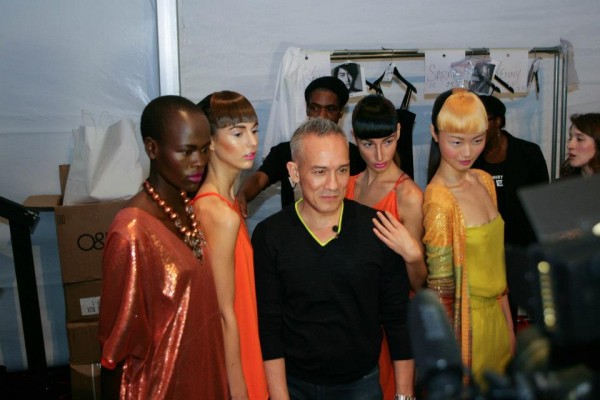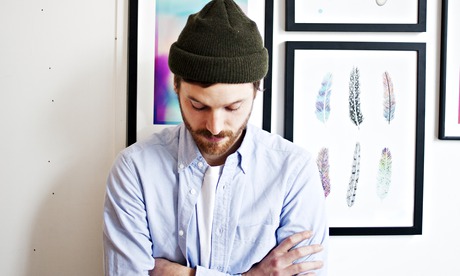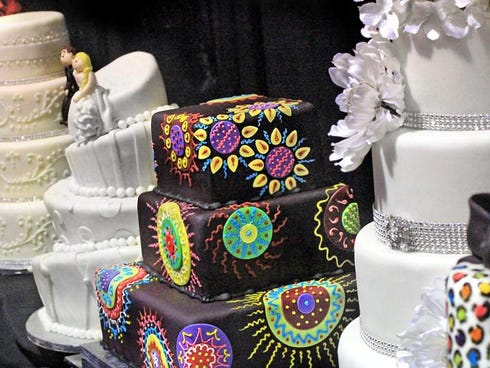They were separated by just a few hundred miles and 48 hours. Yet the crowds at Chanel's show in Paris and Nike's show in Barcelona earlier this month seemed beamed down from galaxies light-years apart.
In Paris, the room was perfumed by No. 5 and Frédéric Malle. In Spain, the conference hall stank of Sure and Lynx. At Nike, a mostly male audience with a penchant for polyester and denim were gathered to view the unveiling of a new World Cup football boot. At Chanel, a mostly female audience with a fondness for facelifts and bouclé were there to witness Karl Lagerfeld's next-season quilted shopping trolleys.
Planet Fashion and the Wide World of Sport might have different atmospheres, but in 2014 they have something in common, too: a passion for trainers. A genre of shoe that evolved to optimise performance, comfort and speed has suddenly found currency among women for whom style - often at the expense of their ability to walk in a straight line, painlessly, faster than 1mph - has always been the only criterion in town.

QueenieAustralia formal dresses
The trainer thing has been bubbling under in fashion for a little while now: Valentino, Jimmy Choo, Givenchy, Hogan and Dior Homme have been making cool kicks for at least a couple of years. These, though, were a bit like fashion sunglasses - entry-level items for those who wanted that designer name more than the design itself. Isabel Marant made a trainer-wedge hybrid that proved hugely successful - but even she recently admitted they were OTT.
Then, a year ago, slip-on skateboard trainers were featured by fashion's Midas-of-the-moment, Phoebe Philo. That the only significant difference between her design for Céline and the venerable skater low-top by Vans was a price differential of several hundred per cent mattered not: for Philo's backing granted trainers an entrée to the fashion's high church.
Now, not only does the front row wear trainers - this season, the Brits resembled an outré running club and even French Vanity Fair 's relentlessly soignée rédactriceVirginie Mouzat was spotted at Bottega Veneta in an elegant rubber-soled ensemble I can only describe as Pilates meets Stefano Pilati - but the shoe is jogging down the catwalk, too. At Dior, Raf Simons (who moonlights for Adidas) combined a moulded trainer sole with a mid-heel pump. There were more slip-ons at Céline, this time with a sole that looked a lot like Nike's famous (if you are into trainers and smell of Lynx) Air Force 1. And at Chanel, bouclé trainers completed almost every single look.
Hence the trip thereafter to Barca, to ask the most influential designer of trainers in the world what he thinks of the phenomenon. Mark Parker, the man who was unveiling the Magista football boot that will be worn in Brazil this summer, is the CEO of Nike - which is by some margin the world's biggest sportswear company.
Today he runs a business that employs more than 30,000 people, has revenues of $26 billion, and boasts a globally recognisable logo. He is fiftysomething, wears jackets by Prada or Tom Ford, looks a little bit like Ron Howard, and is orbited by a constellation of PRs larger even than Lagerfeld's - but when he first started at the company in 1979 it was as a designer of running shoes, a job he still maintains as part of his portfolio today.
Once the Magista has been duly announced (it looks like a densely woven sock, is the first high‑top football boot, and will sell by the truckload) I show Parker pictures of the bouclé trainers from that week's Chanel show on my iPad. Mildly (considering), he observes: "That looks inspired by some work that we have done!"
The company Parker runs was founded in the Sixties to make running shoes. Ever since, its modus operandi has been to make footwear, and much else besides, for sporting endeavour. Or, as Parker puts it: "First of all, we strive to have the product perform at the highest level."
Yet while Nike focuses all its research and marketing oomph on serving an elite band of athletes in sports ranging from snowboarding to sprinting, the wider world is littered with hundreds of millions of immobile slobs like me - and now lots of fashionable women, too - who wear Nike simply because the shoes look great and are comfortable. To service us slobs, every week the company releases scores of new designs or colour combinations, and even offers its customers the opportunity to design their own. The fashionability of Nike - equal to its sporting credentials - is what makes it such a success. To admit as much, though, is not the Nike way.
So when I ask about the aesthetics of Nike's shoes, Parker responds by resolutely sticking to sports: "When athletes look at themselves in the mirror and are ready to compete, it is like an actor going out on stage. They want to look and feel like they are ready to do what they do. You want to be fast, you want to be strong, you want to be intimidating - you might want to be a peacock, too. That psychological element is incredibly important. To get into their heads, not only in terms of what they want from performance - fit, traction, cushioning, whatever - but also in terms of what kind of aesthetic they are looking for, is part of the equation."
OK, understood. Millions of people might buy Nike because they look cool, but Nike itself maintains that this coolness is only a by-product of making shoes that help sportspeople perform better and feel a little bit Eye Of The Tiger, too. So what, then, does Parker think of the sudden adoption of his sweaty specialist subject by chi-chi fashion designers?
He says: "Our motivation isn't to make products that resonate with the luxury fashion consumer. But the nature of what we do, the design and the inspiration, I think sometimes makes it part of that world. People adopt it, and put together as part of a statement they want to make. Comfort is a factor, too. But again, while the aesthetic is important we are not a designer for fashion per se."
Parker says his own desert island Nike shoe would be "the one I'm wearing right here, called the Roshe: immensely comfortable, very simple, clean design. I would wear black" - and sketches his philosophy for fending off competition such as Puma and Adidas: "They are in our peripheral vision. But I like to say at Nike that distance between us and our competitors is a lot less that than the distance between us and our potential."
Nike is a sports company that happens to be one of the biggest fashion brands in the world, too. And while capital "F" fashion has only just woken up to the fact that most of the world wears trainers, Parker's company (despite its athletic mantra) has been awake to that fact for years.
QueenieAustralia bridesmaid dresses




